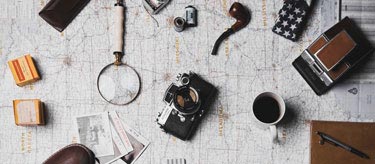Why you need an emergency fund and how to build one
Wondering if you need an emergency fund, and how much money you need to save? This 5-step guide has all the bases covered.
When it comes to building your financial plan, there are the obvious elements that we all know about. Daily banking and budgeting, managing debt, and saving for retirement. But what about having money in case of an emergency?
Today, 26% of Canadians don’t have an emergency savings fund, and another 40% only have enough to cover a month of expenses. If you lost your job, got sick, or needed major car or home repairs, would you be able to cover your bills?
What is an emergency fund?
Let’s start with the basics. An emergency fund can help you avoid going into debt over unexpected costs during a challenging time. It’s not meant to be your vacation fund; it’s your personal insurance policy in case you find yourself out work or needing to cover a large, unanticipated expense.
Some people carry their emergency savings fund in their daily chequing or savings account, while others set it aside in a tax-free savings account. Either way, your money is readily available when you need it.
How much do I need in my emergency fund?
It’s recommended to have 3-6 months’ worth of expenses saved in your emergency savings fund, to cover your monthly costs if you’re out of work. However, if you’re currently paying down debt, your emergency fund should be smaller, in the range of $2,500 to $5,000. That will help you cover smaller payments, while allowing you to focus on paying down your high-interest debt.
To kick-start your savings, here are five tips to help build an emergency fund:
- Figure out your monthly expenses: add up how much you spend on housing, transportation, bills, groceries, etc., each month, then multiply it by 3-6 months. That’s the rule of thumb for how much you should have set aside.
- Cut costs: think about how much you spend on coffee, lunches out, and other impulse purchases. Give up one or two things a week, and stash that money into your savings.
- Automate your savings: treat your savings like any monthly bill, and automatically transfer it into your savings account on payday. The sooner it’s saved, the less time you’ll have to spend it.
- Start small: if $10/week is what you can manage, so be it! Once you’re used to that money not being available to spend, see if you can bump it up to $15 or $20, and go from there.
- Stash your windfalls: instead of using your tax refund or bonus for a shopping spree or holiday, set it aside. It’s a painless way to bolster your savings without impacting your current budget.
Where should I keep my emergency fund?
To keep your money working hard but also accessible when you need it, you should put it in a high-interest account. High-interest accounts, like the Evolvespire Advantage account, combines the benefits of a high-interest savings account with the accessibility of a chequing account, putting your to money work while giving you easy access to your money in the event of an emergency.
If this all feels overwhelming, don’t worry. Take a deep breath. Building an emergency savings fund is something you can do over time, and you shouldn’t expect to have it ready overnight. But the sooner you start saving, the more prepared you’ll be for any unexpected expenses.


